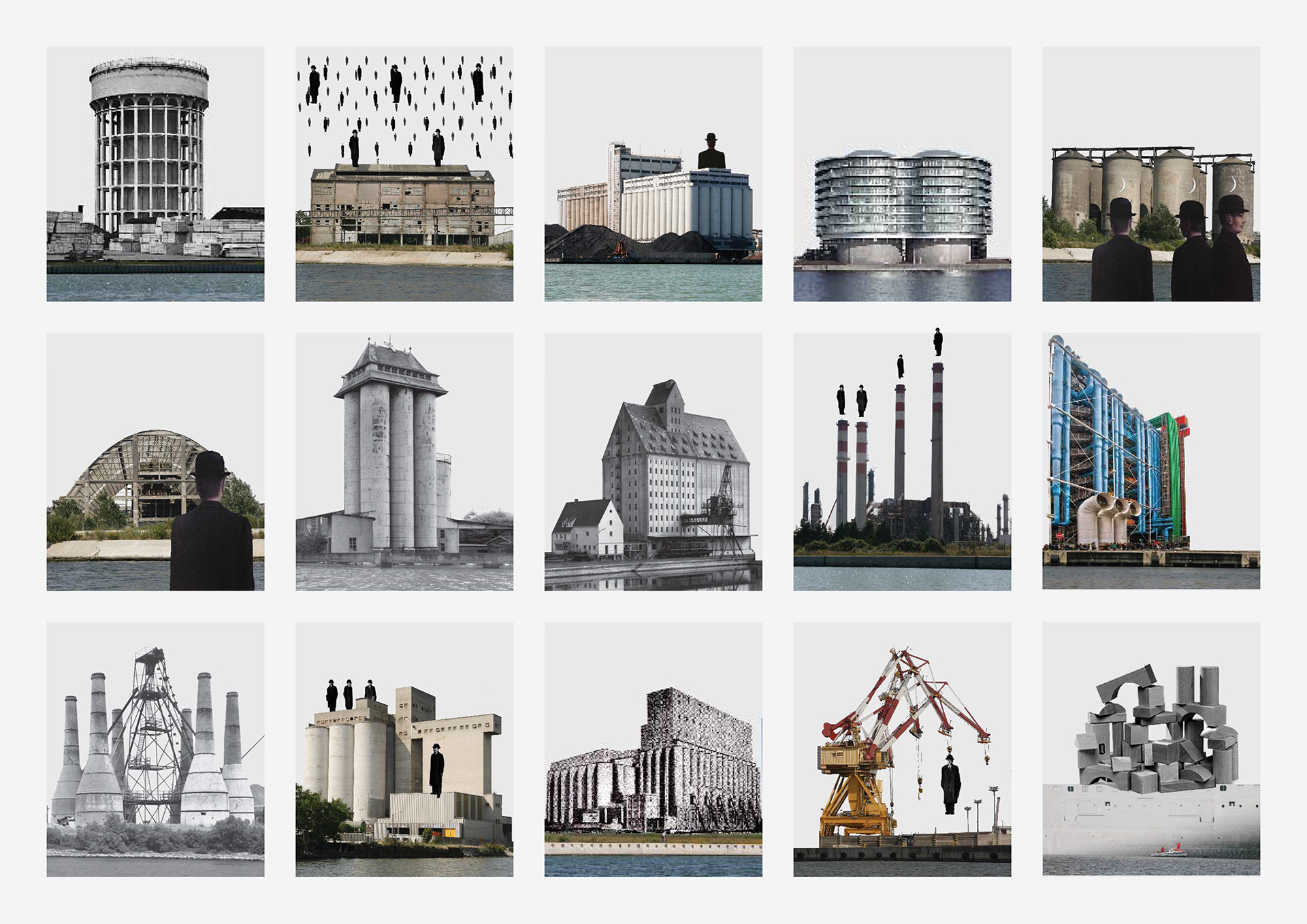Professor
Fernanda De Maio [IUAV]
Assistants
Elisa Petriccioli, Claudia Pirina, Vittoria Sarto, Alessia Scudella

Burden of dreams
Would it be possible, by disassembling and recomposing Porto Marghera industrial forms, to change this fragment of Venice, from a wasteland, terrible but at same time featured by beauty as it is settled within the natural lagoon system, to a urban park with residential and tertiary equipment and all services necessary to make this area again habitable?
The industrial forms have fuelled the idea of modern architecture in the last hundred years, the same hundred years passed from Marghera’s industrial hub foundation.
For many architects in the present time as in the past – from Werner Lindner to Bernd and Hilla Becher, from Le Corbusier to Albert Khan, from Brinkman and Van der Vlugt to Rogers and Piano, from Peter Behrens to Afra and Tobia Scarpa, from Frank Lloyd Wright to Gino Valle – the pouring and mixing of the industrial forms indicated a possible way to make the architecture we daily practice.
Porto Marghera was founded thanks to the conception of the entrepreneur/Count Volpi in a merging area between two different worlds, the hinterland and the lagoon system. In the current debate on the development of Venice, the central role of Porto Marghera is due to the strategic value of its position.
This workshop proposes to students to investigate some areas of the industrial hub, as making a trip across its borders on the water, where there are several and diverse buildings with different scale suggesting analogies with some architectural masterpieces of the last hundred years featured by an eminently industrial character. Last stops of this trip are Forte Marghera and Palladio’s Villa della Malcontenta while the only condition would be to take some particular Porto Marghera waterways indicated by the teaching group. This ways are along borders areas where arise the buildings involved in the redevelopment project. Students are requested to develop the design project of buildings and the new urban park through a disassembling and recomposing process.
The apparently playful design approach, suspended between the LEGO game and the treasure hunt, indeed hides the effort that every dream must pursuit to become real.
L’onere dei sogni
È possibile smontando e rimontando le forme industriali di Porto Marghera, trasformare questo frammento di Venezia da terra desolata, terribile e dotata di una bellezza partecipe della natura lagunare del territorio in cui si insedia, in un parco urbano con dotazioni residenziali, terziarie e di servizio tali da renderlo nuovamente abitabile?
L’immaginario delle forme industriali ha alimentato l’idea del moderno in architettura negli ultimi cento anni e cento anni compie, nel 2017, Porto Marghera.
Da Werner Lindner a Bernd e Hilla Becher, da Le Corbusier ad Albert Khan, da Brinkman e Van der Vlugt a Rogers e Piano, da Peter Behrens ad Afra e Tobia Scarpa, da Frank Lloyd Wright a Gino Valle, il travaso e il rimescolamento delle forme industriali ha indicato una delle possibili vie dell’architettura che quotidianamente pratichiamo. Porto Marghera nata dalla concezione dell’imprenditore/conte Volpi in un’area in cui si saldano i mondi della terraferma e della laguna, deve la propria centralità, nel dibattito attuale sullo sviluppo di Venezia, proprio a questo valore di posizione.
Nel progetto che si propone agli studenti, il viaggio avviene lungo i bordi acquatici dell’insediamento industriale, dove insistono una serie molteplice di manufatti che a scale differenti suggeriscono analogie con alcuni capolavori dell’architettura degli ultimi cento anni dal carattere eminentemente industriale. I punti terminali di questo viaggio sono Forte Marghera e Villa della Malcontenta di Palladio, il vincolo è che il tragitto si può percorrere solo per via d’acqua bordeggiando le rive di Porto Marghera indicate dalla docenza, laddove sorgono i manufatti oggetto della trasformazione richiesta agli studenti con la pratica dello smontaggio e della ricomposizione per costruire edifici di città nel nuovo parco. L’esercizio apparentemente ludico, sospeso tra il LEGO e la caccia al tesoro, cela tra le sue pieghe la fatica a cui ogni sogno ci costringe per diventare realtà.
